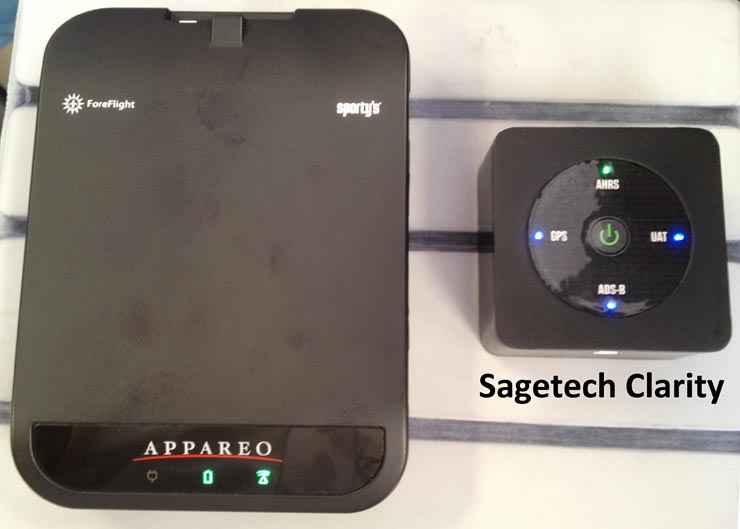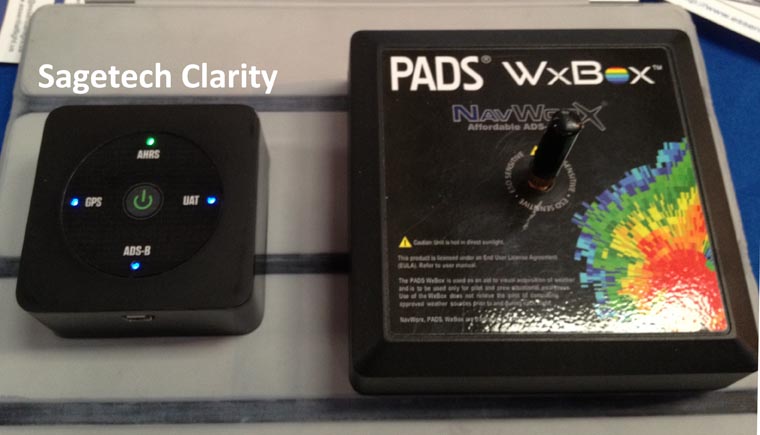Digging around a bit...that map may be missing the WAM in Colorado. All the documents mention ADS-B as part of the WAM (or co-located) but doesn't mention if it's ADS-B in or out or both. Guess I'll find out since I ordered the receiver.
WAM is neither ADS-B In or Out.
It's a ground-based system that has one central transmitter that's omnidirectional that sends out the same pulse as a "passing" RADAR beam that triggers all aircraft transponders within range of that "interrogation" to reply. (Similar but not equal to the military IFF system, just as a poor but maybe easy for some to understand example.)
Those replies are received by multiple ground stations who's locations are very well known mathematically.
The millisecond differentials in timing of when the transponder reply is received at each site is recorded down to very small fractions of a second. (Might be smaller than milliseconds, don't know.)
By doing that and then transmitting that time-stamped result from a number of ground receivers back to a central computer, mathematical triangulation of the location of each airborne transponder is accomplished. Instant "RADAR" picture without the expense of a real RADAR.
This negated the need to install a new RADAR installation in the mountains and instead allowed a much simpler to maintain ground station network similar to tiny cell sites -- in RF and site complexity -- to be installed for the ability to see all transponder-equipped targets in the mountain valley at KASE much much cheaper than a RADAR installation.
Because it needs the responses from transponders, it can only see transponder equipped and operating aircraft. So called "secondary" targets only.
No primary "the RADAR bounced off of something and reflected back" targets.
A friend manages the sites they installed many of the systems on. It's pretty much a small NEMA rated box and a couple of vertical antennas and a GPS antenna to accurately sync/discipline what I would assume are Rubidium clocks for the accuracy level involved.
The sites also have decent dedicated data connectivity to somewhere. He wasn't sure whether the computer heavy lifting is done at the transmitter site or back at a data center at ZDV.
There's computer gear installed at the TX site, but it's not exactly labeled "here's where the magic happens" sitting there in the rack.

I have good photos of some of the receiver sites somewhere. NEMA box, a couple antennas. Some are even pole-mounted. They're that small.
But AFAIK, they're NOT capable of ADS-B In or Out to a 978 MHz receiver.
Whether they can relay information via the Mode-S style ADS-B through the "RADAR" simulation pulse, I'm not sure. But I doubt it.
I think it was designed in Europe and integration to anything that ADS-B normally feeds out is quite unlikely, just as a "systems guy" guess. Sites up there are also going to be quite network-bandwidth limited.
Knowing that Rocky Mountain seems quite "behind the power curve" on deployment, I also noticed a significant uptick in Federal work vehicles of the type usually assigned to crews that have to do mountaintop and other "dirt road" type equipment installations, massing lately at the old FSS building and tower site at KAPA lately. They look busy with some big project. Or getting ready for one. Staging area perhaps.
Haven't seen that many vehicles there since it was open as a FSS pre-LockMart days. Most are locked in the back gated area beside the building but a few work trucks coming and going in the main parking lot.
There's still a lot of FAA RF infrastructure for the RCOs for Denver AFSS on that tower as well as a number of remote receivers and transmitters for DEN TRACON, so the activity there may only be MX and/or upgrades to that gear and not related to ADS-B. Impossible to say.
I hope you don't have a useless brick for a while.
The good news is, at least FAA has a real budget now. That's better than no budget and this stuff getting put off while waiting for Congress to write the checks.
There are also some mountaintop RCOs that are flaky (Badger Mountain comes to mind. It sounds like antenna damage to me...) and at least a couple State of Colorado mountain AWOSs down or giving wacky wind data.
It's coming up on the traditional "let's get started fixing the almost inaccessible stuff on top of mountains" season for the area's radio techs. I suspect stuff will start popping back to life and/or sounding better here shortly.
But... the State is a lot more broke right now than the Feds, and the Feds refuse to operate those mountain AWOS stations or take any responsibility for them... so we'll see. State also lost the driving head of the Aeronautical Division last year. Haven't heard how effective the new head cheese is from anyone yet.
Lots of that stuff is co-located at the State Public Safety radio sites and the techs usually need either a major outage of something related to the Statewide 800 MHz P-25 "DTRS" system or a decent list of other maintenance to do before a sure fire site visit takes place.
I have a project that's going to need a bunch of visits all over the place this year. If I see FAA gear getting' installed, I'll let ya know.
My first trip will probably be out to the exciting town of Nucla this year. Getting reports of something dead and other reports it died in a lightning strike last fall. Have antenna and hard-line, will travel!
Kinda getting jazzed for "radio maintenance season". The view from some of the sites is awesome.






